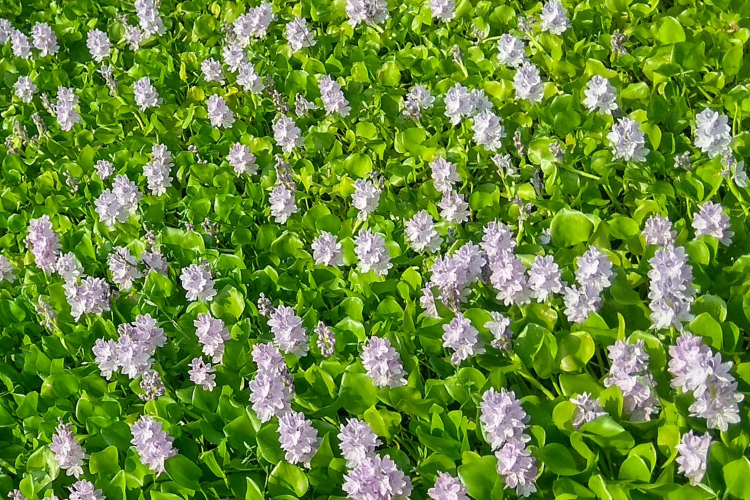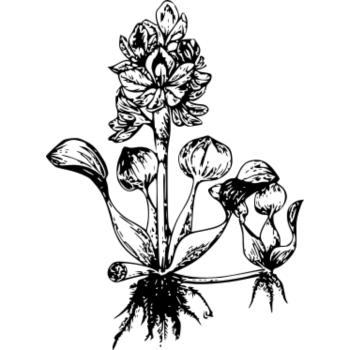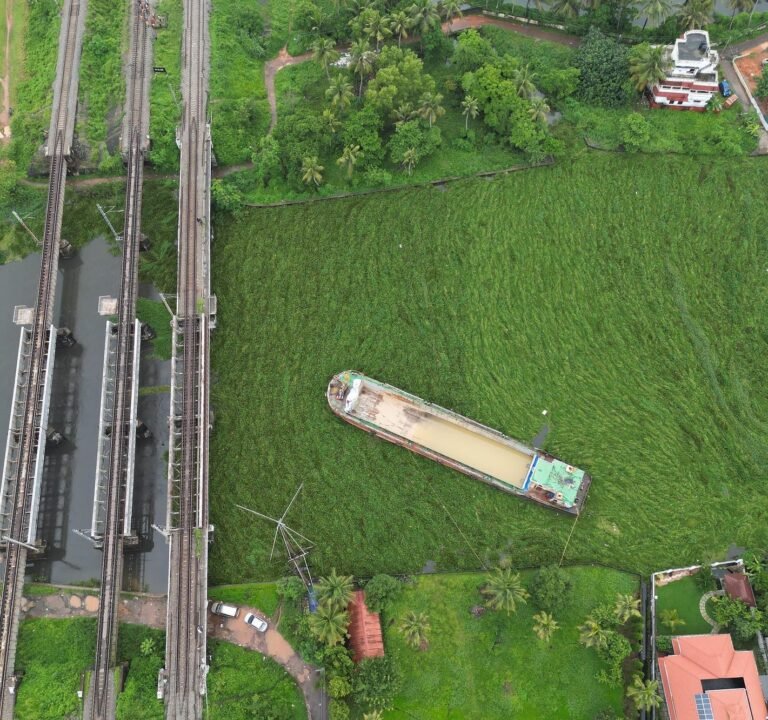
Pola Biomaterials from Water Hyacinth

Water Hyacinth
EICHHORNIA CRASSIPES
- Nickname: Terror of Bengal
- World’s worst water weed
- Explosive growth rate
- Choke waterways & water supply equipment
- Cause extensive environmental, social & economic problems
Kingdom
Plantae
Phylum
Magnoliophyta
Class
Liliopsida
Order
Liliales
Family
Pontederiaceae
Common name
water hyacinth (English), wota haisin (English, Papua New Guinea), jacinthe d’eau (French), floating water hyacinth (English), bung el ralm (Palauan), bung el ralm (English, Palau), mbekambekairanga (Fijian), water orchid (English), wasserhyazinthe (German), jal khumbe (English, Fiji), jacinto-aquatico (Portuguese), lechuguilla
(Spanish), jal kumbhi (Hindi, India), African Pola(Malayalam, India), jacinto de agua (English, Puerto Rico), lila de agua (English, Dominican Repbulic), riri vai (English, Cook Islands), bekabe kairanga (English, Fiji), lirio acuatico (English), aguapé (Portuguese, Brazil)
Synonym
Pontederia crassipes , Mart. (basionym)
Eichhornia speciosa , Kunth
Piaropus crassipes , (Mart.) Raf.
Heteranthera formosa
Piaropus mesomelas
Similar Species
Limnobium spongia
Physical Properties
CONTENT
- Cellulose 57%
- Hemicellulose 25.6%
- Lignin 4.1%

Water hyacinth is a floating waterweed up to 65 cm tall and the leaves are sort of green rounded up to 5–10 cm in diameter. Leaf stalks of young plants are swollen into spongy, bulbous structures; mature plants have elongated long stalks.
A Highly Invasive Aquatic Weed
Water Hyacinth is known as the world’s worst water weed, colonising water bodies around the globe at an explosive rate. It is considered a noxious weed species in more than 50 countries. Because of its multiple and highly effective means of reproduction, it can occupy entire bodies of water. A single plant under ideal conditions can produce 3,000 others in 50 days, and cover an area of 600 square metres in a year. It can withstand extremes of nutrient supply, pH level, temperature, and can even grow in toxic water. It grows well in still or slow-moving water. It choke waterways, damages water distribution systems and causes severe environmental degradation. I have seen Water Hyacinth kill the lakes in my native place, Kerala in India. While its vibrant, violet flowers form a beautiful carpet over the water, it kills everything under the water including the fishes.
A single plant under ideal conditions can produce 3,000 others in 50 days, and cover an area of 600 square metres in a year.
The water hyacinth infestation has major environmental and socio-economic impact
How Big A Problem Is Water Hyacinth?
International Union for Conservation of Nature’s (IUCN) has identified Water Hyacinth among the most dangerous invasive species in the world as it is very difficult to eliminate from a water body and has significant adverse socio-economic repercussions. The weed is characterized by its rapid dispersal, growth and reproductive capabilities and the infestation has major environmental and socio-economic impact, e.g., (i) depletion of dissolved oxygen in open waters reducing fish populations; (ii) damage to fishing boats adversely impacting their fuel efficiency; (iii) makes casting net difficult by covering the water surface; (iv) blockages to small channels, rivers and canals, causing transport delays; (v) a reduction in water flow and power loss / damage to hydroelectric power stations, as well as blockages of irrigation channels; (vi) reduced portability of drinking water, with potential health risks; and (vii) an increase in disease vectors, such as mosquitoes. The physical removal of the weed normally involves manual removal through harvesting and in-situ cutting of the plant. The installation of surface screens or barriers to arrest the weed mat for cutting can make this process easier , however, physical methods are labor-intensive and suboptimal or impossible for removal within large catchment areas.
How we solve the problem?
Like all human-induced ecological issues, the spread of water hyacinth forces us to reconsider our understanding of land and of interspecies relationships. This reconsideration brought us to imagine a new future, one that contends with disruptions and uncertainty and that, in response, produces new meaningful objects. What if product materials were grown instead of manufactured, what if they were derived from waste, repairable, repurposable, responsive, and truly sustainable? What if they could provide benefits to the user or their surroundings? How can we use environmental waste that is created by invasive species? Can we manage the problem by repurposing them into new material? What if this alternative material offers to solve a range of problems connected with the existing material from carbon footprint to health problems of workers?

solution
HARVEST, DRY, MAKE
Water Hyacinth is harvested, dried and used as raw material for making materials that are alternatives to leather, plywood etc.
Pola Biomaterials- Applications of invasive aquatic weed water hyacinth in the design field
Regenerative Design
Like all human-induced ecological issues, the spread of water hyacinth forces us to reconsider our understanding of land and of interspecies relationships. This reconsideration brought us to imagine a new future, one that contends with disruptions and uncertainty and that, in response, produces new meaningful objects.
Regenerative initiatives are rooted in regional contexts, honoring the unique geological, climatic, historical, and cultural traditions of each place. These initiatives promote lifestyles that are low-impact, healing, and of high quality, blending modern clean and renewable technologies with indigenous wisdom. They prioritize the development of strong communities, embracing inclusiveness and cultivating a deep connection with ecosystems. At the core of regenerative practices is a profound respect for the innate wisdom found in nature, nurturing a relational perspective that acknowledges the interdependence between humans and the environment. By harmonizing with nature’s inherent wisdom, regenerative initiatives seek to create sustainable and thriving systems that benefit both present and future generations
Like all human-induced ecological issues, the spread of water hyacinth forces us to reconsider our understanding of land and of interspecies relationships. This reconsideration brought us to imagine a new future, one that contends with disruptions and uncertainty and that, in response, produces new meaningful objects.
Regenerative development aims to reverse the degeneration of the earth’s natural systems and also design human systems that can co-evolve with natural systems. It is one step above being sustainable. This is carried out by taking into consideration how the use of invasive species can create something beneficial. Products are created from Water Hyacinth through production processes that are not complicated and can improve bio-diversity.
Phase
1
2
3
4
5
6
What
Research and creating Biomaterials
Setting up the first community based production facility
Setting up the Second community based production facility
Recreating biomaterials using local water hyacinth plants
Research and creating biomaterials Second part
Setting up the Third community based production facility
Where
IAAC, Barcelona
Kerala, India
Kolkata, India
Thimphu, Bhutan
Waag, Amsterdam
Spain/Portugal
When
April 30, 2023
June-August,2023
August, 2023
July-August, 2023
September-November, 2023
December 2023
Status
Completed
Ongoing
Planned
Planned
Planned
Planned
Create a lasting visual impact with sustainable products and better use of technology.
Where to find us
Prayaana Infomedia, Infopark TBI, 1ST Floor, Jawaharlal Nehru Stadium, Kaloor, Ernakulam, Kerala
Phone: 9809080888
soulsanchi@gmail.com
